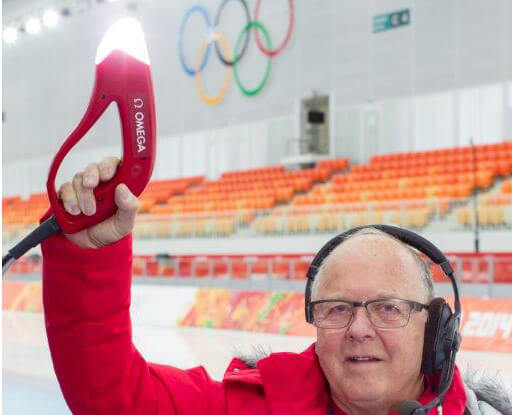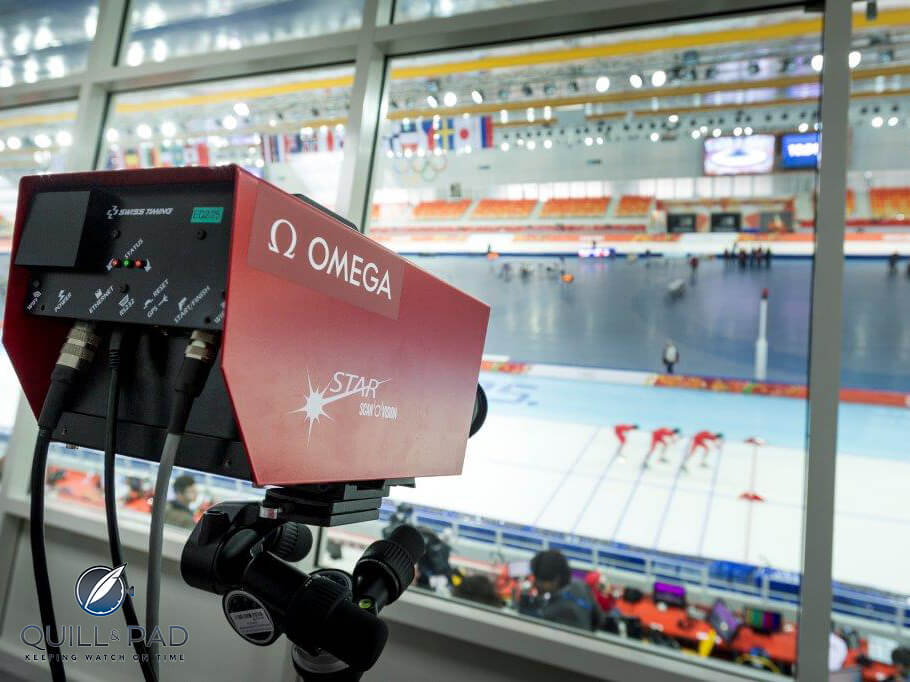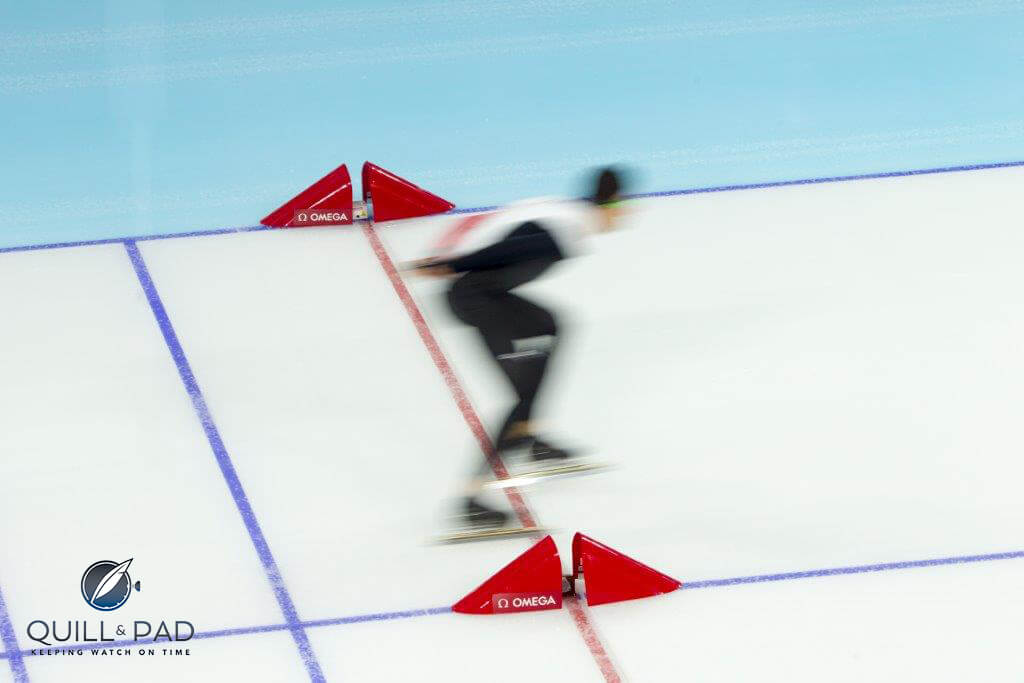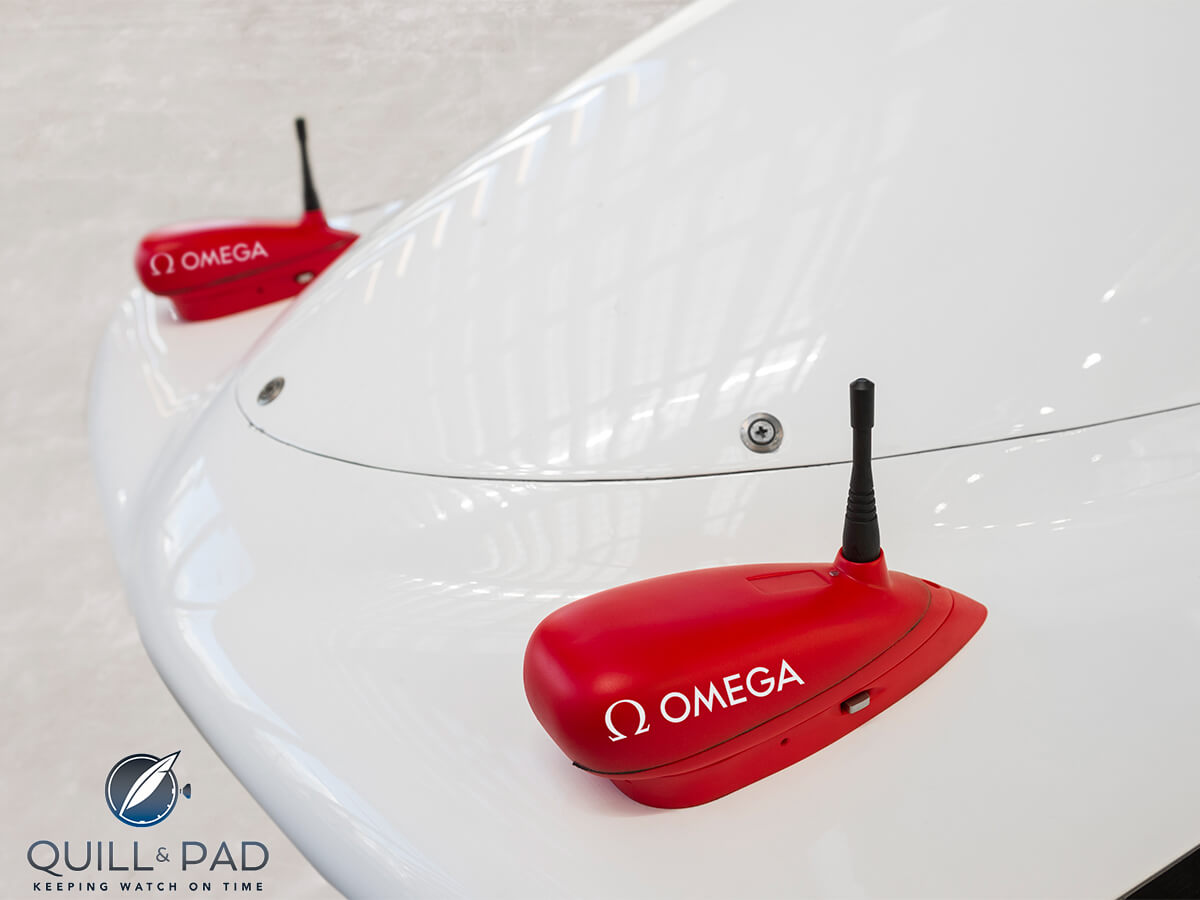Yesterday we took a short a look at the history of Omega’s sports timing in Omega and Olympic Sports Timing. Today, we’d like to “virtually” take you to Sochi, to show you some of the interesting timekeeping technologies that Omega uses to track athletes’ performances.
Such as the Electronic Start System introduced four years ago at the Vancouver games of 2010. Omega believes this will once again be a point of media interest, and the reason is clearly because it so interestingly and efficiently supplants the usual shotgun used to signal the start of a race.
When the trigger of the Electronic Start System is pressed, three things happen: a sound is played, a light flash is emitted, and a start pulse is given to the timing device. By pressing the trigger a second time within two seconds, a false start can be audibly indicated.
Five electronic pistols will be used in the speed skating and short track speed skating competitions.
Scan O’Vision photo finish camera
The photoelectric cell described in the previous article, which instantly stopped a mechanical chronograph when an athlete triggered it, has now morphed into the Scan O’Vision. The Scan O’Vision determines the competitors’ official finishing times in speed events by using a photo finish camera able to record action at an ultra-fast 2,000 frames per second.
Athletes in Sochi are also wearing transponders on their bodies when competing. These lightweight and truly discreet pieces of equipment are attached to the left and right legs of each competitor. These transponders are what make it possible for Omega and Swiss Timing to measure, record and display intermediate times and rankings during races.
There are 12 speed skating events in all: men’s, women’s and pursuit.
Another of the Omega timing devices is a lap counter located near the finish line, which lets skaters know how many laps remain.
Snowgate starting gate
The starting gate you see skiers and snowboarders burst out of at alpine ski events is called the Snowgate. It establishes the starting pulse using mechanical and electro-mechanical systems in the control box, and the system is automatically activated when the skier bursts through the gate.
There are ten alpine events, including men’s and women’s downhill, super-G, slalom, giant slalom and super-combined, and these can hit speeds up to 130 kilometers per hour.
Omega has also set up laser photocells to record intermediate and final times, with the Scan O’Vision capturing the thrilling finishes.
Bobsleigh Measurement Unit
This is Omega’s world premier in Sochi, and it allows “in-run” data to be instantly available to both TV viewers at home and the athletes in the Olympic venues. The Measurement Unit comprises a speed sensor, a three-dimensional acceleration sensor (for continuous determination of the forces acting on the driver), and a triple-axis gyro-sensor (measuring angular velocity, or the bob’s speed, as it rotates around the track). One is mounted on each bob to gather the data. Here, too, laser photocells positioned along the track record intermediate and finish times.
The combination of laser photocells positioned along the track and the Scan O’Vision capturing the finishes is also used to accurately time the 14 cross-country events.
Below, you can see how timing for various events would work. You can choose the event at left:
For sporting results in real time, visit here: www.omegawatches.com/planet-omega/sport/sochi-2014
Trackbacks & Pingbacks
-
[…] A look at the equipment Omega brought to Sochi to time these Games, including a unique explanatory interactive […]
-
[…] – Elizabeth’s short history of Omega’s involvement in Olympic timing – A look at the equipment Omega has brought to Sochi to time these Games, including an explanatory interactive animation – A rundown of the history of Russian watches and their contemporary status by guest poster Craig […]
Leave a Reply
Want to join the discussion?Feel free to contribute!





Something related to Omega Red from X-Man?
Interested in timing devices for touchpad swimming